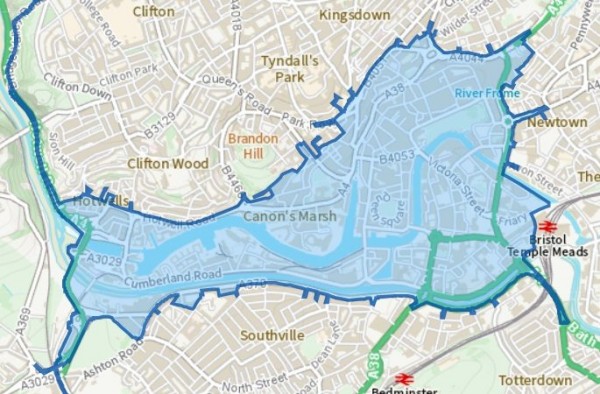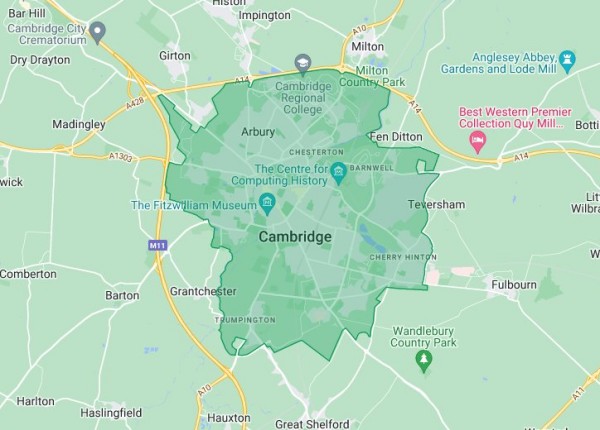Bristol’s so-called Clean Air Zone, which has been long delayed and much contested, comes into force at the end of the month, with the usual doom-mongers predicting it will spell the death of the city centre and its shopping facilities in particular. Leaving aside those whose idea of transport policy involves sitting at the steering wheel of a mostly empty motorised three-piece suite, the scheme has caused some concern, particularly when coupled with the city’s dreadful public transport, exacerbated as it is at present due to a shortage of bus drivers.
A map of Bristol’s Slightly Less Polluted City Centre Air Zone is shown below.

Some might consider it timid and unambitious, especially if the aim is to get people out of their cars and walking and cycling (so-called active travel. Ed.) or using public transport.
The argument is that the city vastly needs to improve facilities for cycling and walking* – providing far more dedicated infrastructure for both – as well as doing rather more in the way of enforcement against pavement parking (posts passim). As regards public transport, millions of pounds in public money have been poured into the city’s bus network over the years (e.g. Metrobus) with very sign of improvement and with the whole system now suffering from a driver shortage, the area’s bus network is even more unreliable than it has ever been. As for local rail services, Bristol’s are a disgrace compared with other major cities. It took decades of campaigning just to get a reasonably frequent service on the Severn Beach Line, whilst improvements to services to towns and cities surrounding local authorities have hardly improved at all. Then there’s the long-running saga of the reopening of the Bristol to Portishead railway line, where in over 2 decades progress can only be described as sub-tectonic, i.e. the earth’s tectonic plates, which shift by mere millimetres a year, are outstripping the bureaucrats. Meanwhile, the country is also failing to deal with a record cancellations of train services.
Could these be the real reasons why Bristol’s implementation of a congestion charging scheme looks so timid and unambitious?
Looking around the country, Bristol’s congestion charging zone appears to be trifling, a mere inconvenience to the majority who can continue to drive without impunity, particularly when one looks at what is being proposed in Cambridge, for example, as shown below.

As can be seen, the Cambridge scheme covers most of the city’s built-up area, as well as some surrounding villages. It too has attracted criticism, with it being described as town versus gown and car versus bike, pitting the city’s ordinary residents against the dreamers in the spires of Academe.
Your ‘umble scribe just wonders what the reaction of Bristol would have been, had a Cambridge-style scheme been proposed for the city.
* = One of the biggest changes that the council could do to make walking a more practicable mode of transport would be to change the timings on pelican crossings so that the signals change to allow pedestrians to cross within seconds of the button being pressed. This was first suggested over 30 years ago by one of the city’s cycle campaigners, the late Chris Hutt of Cyclebag. The council is keeping it persistently out of sight, having filed it in its bureaucratic oubliette otherwise known as its extensive Not Invented Here filing system.